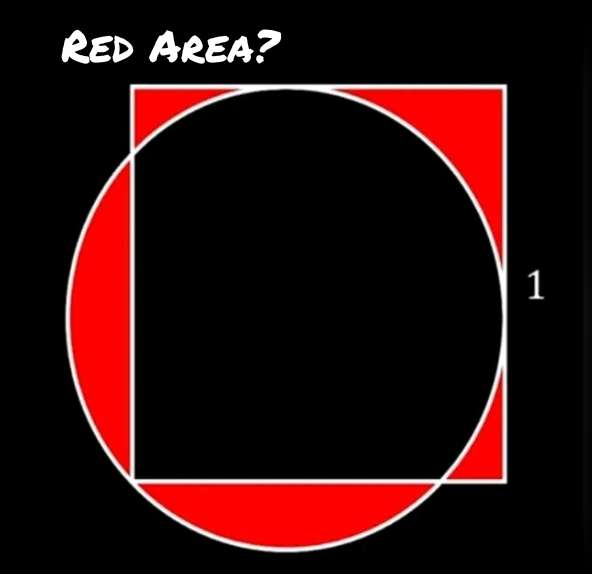Mathematics Question and Solution
a = (b+1) units.
a is the diameter of the circle.
c = ½(a)
c = ½(b+1) units.
c is the radius of the circle.
d² = 1+1
d = √(2) units.
d is the diagonal of a square.
e = d-c
e = √(2)-½(b+1)
e = ½(2√(2)-1-b) units.
Calculating b.
(½(2√(2)-1-b))² = 2(½(b+1))²
½(2√(2)-1-b) = √(2)(½(b+1))
2√(2)-1-b = √(2)(b+1)
2√(2)-1-b = √(2)b+√(2)
√(2)-1 = √(2)b+b
(1+√(2))b = (√(2)-1)
b = (√(2)-1)/(√(2)+1)
b = (2-2√(2)+1)/(1)
b = (3-2√(2)) units.
b = 0.1715728753 units.
c = ½(b+1)
And b = (3-2√(2)) units.
c = ½((3-2√(2))+1)
c = ½(4-2√(2))
c = (2-√(2)) units.
c = 0.5857864376 units.
Again, c is the radius of the circle.
Diameter of the circle, a is;
a = b+1
And b = (3-2√(2)) units.
a = (3-2√(2))+1
a = (4-2√(2)) units.
a = 1.1715728753 units.
Or
a = 2c
a = 2(2-√(2))
a = (4-2√(2)) units.
a = 1.1715728753 units.
2f² = (4-2√(2))²
√(2)f = (4-2√(2))
f = (4-2√(2))/√(2)
f = (2√(2)-2) units.
Therefore, Area Red is;
Area circle with radius (2-√(2)) units + Area square with side length 1 unit - 2(area semi circle with radius (2-√(2)) units + area triangle with height and base (2√(2)-2) units respectively).
= π(2-√(2))²+1²-2(½*π(2-√(2))²+½(2√(2)-2)²)
= 4π-4√(2)π+2π+1-(4π-4√(2)π+2π+8-8√(2)+4)
= 6π-4√(2)π+1-6π+4√(2)π-12+8√(2)
= (8√(2)-11) square units.
= 0.313708499 square units.
